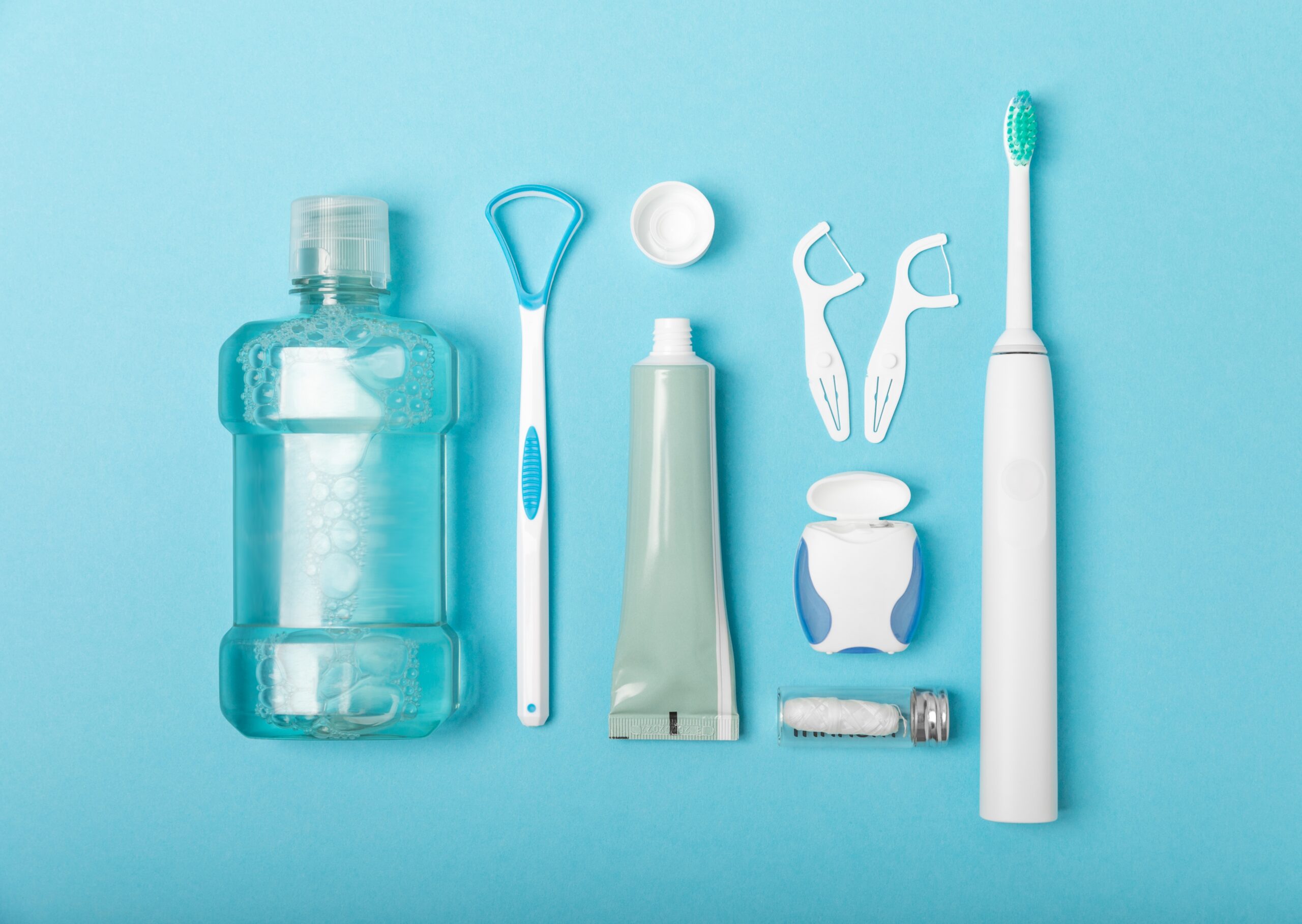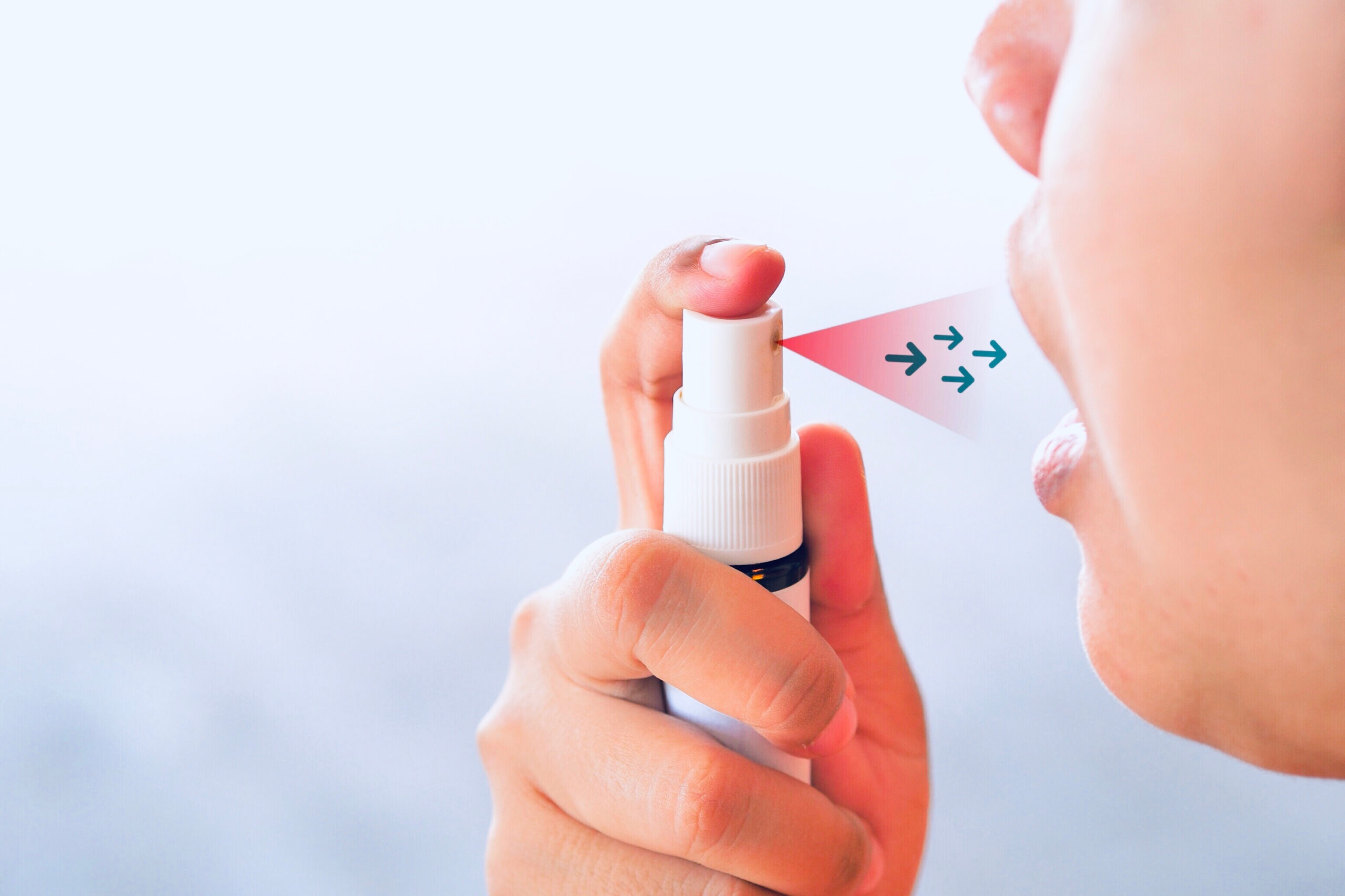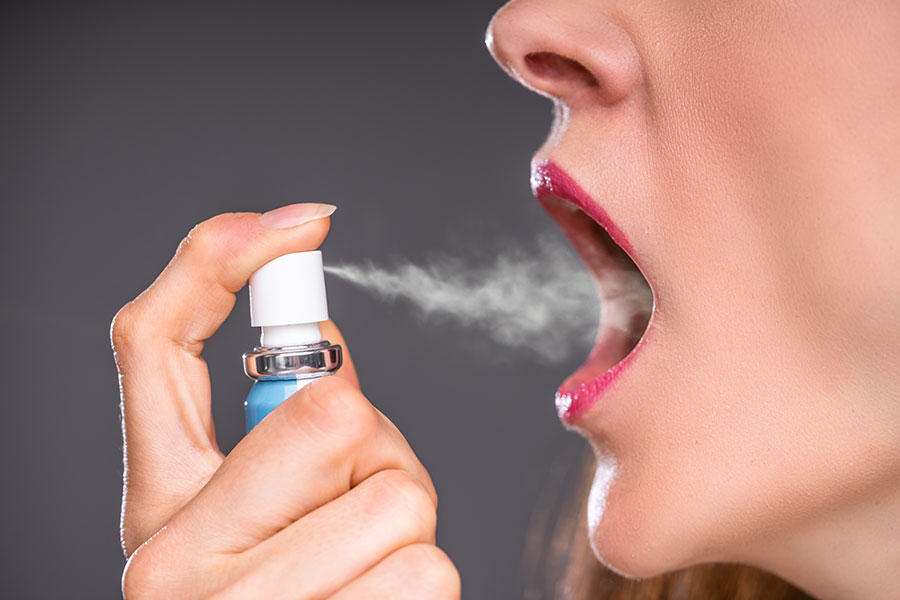
Une bonne hygiène bucco-dentaire est essentielle au maintien de dents et de gencives saines, ainsi qu'au bien-être général. Si le brossage et l'utilisation du fil dentaire sont des pratiques fondamentales pour les soins bucco-dentaires, l'utilisation de produits d'hygiène bucco-dentaire complémentaires peut contribuer à rafraîchir l'haleine, à réduire la plaque dentaire et à renforcer l'émail. Parmi ces produits, on trouve : rafraîchisseur de bouche, également connu sous le nom de vaporisateur respiratoire, qui offre une méthode rapide et pratique pour rafraîchir l'haleine en déplacement.
Dans cet article, nous allons explorer les fondements scientifiques des rafraîchisseurs d'haleine, explorer leur action contre les mauvaises odeurs buccales et examiner leurs avantages et leurs risques. Que vous utilisiez régulièrement des rafraîchisseurs d'haleine ou que vous soyez simplement curieux de leur fonctionnement, poursuivez votre lecture pour découvrir le monde fascinant des produits d'hygiène bucco-dentaire.
Que sont les rafraîchisseurs de bouche ?

Les rafraîchisseurs d'haleine, ou sprays pour l'haleine, sont un type de produit de soins bucco-dentaires qui aident à éliminer la mauvaise haleine en masquer les odeurs ou tuer les bactéries responsables des odeursIls sont disponibles dans une variété de formules et de formats, notamment des sprays, des menthes, des gommes et des pastilles.
Par rapport à d’autres produits de soins bucco-dentaires tels que dentifrice, eau dentifrice, et du fil dentaire, Les rafraîchisseurs d'haleine offrent une solution immédiate et mobile pour lutter contre les mauvaises odeurs buccalesIls sont particulièrement utiles pour ceux qui consomment fréquemment des aliments et des boissons qui provoquent des odeurs ou qui souffrent de sécheresse buccale, une condition qui réduit le flux de salive et entraîne une mauvaise haleine.
Bien que leur fonction soit similaire à celle d'autres produits rafraîchissants pour l'haleine, tels que les menthes et les chewing-gums, les rafraîchisseurs d'haleine sont formulés pour fournir fraîcheur plus durable et plus grande efficacité pour éliminer la mauvaise haleine. Ils contiennent souvent des ingrédients actifs tels que le menthol, l'huile de menthe poivrée et l'eucalyptus, qui procurent une sensation de fraîcheur et créent un effet masquant.
Comme fabricants de produits de soins bucco-dentaires mettre davantage l’accent sur l’importance de l’hygiène bucco-dentaire, Les rafraîchisseurs d'haleine sont devenus un ajout populaire aux gammes de produits de soins bucco-dentaires. Produits de soins bucco-dentaires de marque privée en particulier, ils incluent souvent des rafraîchisseurs d'haleine dans leurs offres, offrant aux consommateurs une variété d'options parmi lesquelles choisir en fonction de leurs préférences et de leurs besoins.
Comment fonctionnent les rafraîchisseurs de bouche ?
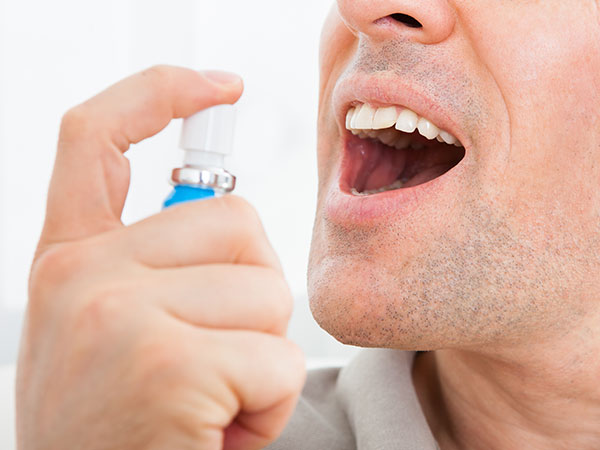
| Type de rafraîchisseur de bouche | Ingrédient(s) actif(s) | Comment ça marche |
| Bonbons à la menthe pour l'haleine | Menthol, huile de menthe poivrée, huile d'eucalyptus | Crée une sensation de fraîcheur, masque la mauvaise haleine, stimule la production de salive |
| Chewing-gum | Xylitol, sorbitol | Stimule la production de salive, aide à éliminer les bactéries et les débris alimentaires de la bouche, inhibe la croissance des bactéries buccales |
| Eau dentifrice | Huiles essentielles, chlorhexidine, peroxyde d'hydrogène | Tuer ou réduire les bactéries responsables des odeurs, neutraliser les composés soufrés volatils |
| Sprays buccaux | Huiles essentielles, bicarbonate de sodium, chlorure de zinc | Similaire au bain de bouche, plus pratique pour une utilisation en déplacement, effet plus durable (dans certains cas) |
L'odeur buccale, ou halitose, est un problème courant pour de nombreuses personnes. causée par la décomposition de particules alimentaires dans la bouche par des bactéries, qui produisent des composés soufrés malodorants. Une mauvaise hygiène bucco-dentaire, une bouche sèche et certaines pathologies peuvent aggraver la mauvaise haleine.
Les rafraîchisseurs d'haleine neutralisent ou masquent ces composés responsables des mauvaises odeurs pour une haleine fraîche et agréable. Leur action varie selon leur formule et leurs ingrédients actifs.
Sprays et pastilles pour l'haleine contiennent souvent des agents antimicrobiens tels que le chlorure de cétylpyridinium ou la chlorhexidine, qui tuent les bactéries responsables des odeurs. D'autre part, menthes et chewing-gum fonctionnent généralement en créant un arôme fort et mentholé qui domine la mauvaise odeur.
Au niveau moléculaire, les ingrédients actifs de rafraîchisseurs de bouche interagissent avec les composés responsables des odeurs pour s'y lier ou modifier leur structure chimique, réduisant ou éliminant ainsi l'odeur. Par exemple, le menthol et l'huile essentielle de menthe poivrée activent le récepteur TRPM8 dans la bouche, ce qui procure une sensation de fraîcheur et masque l'odeur.
Alors que les rafraîchisseurs d'haleine fournissent une solution rapide et facile à la mauvaise haleineIl est important de noter qu'ils ne s'attaquent pas à la cause profonde de l'haleine. Une bonne hygiène bucco-dentaire, une consommation d'eau abondante et une alimentation équilibrée peuvent contribuer à prévenir l'halitose.
Ingrédients des rafraîchisseurs de bouche

Les rafraîchisseurs d'haleine peuvent contenir une large gamme d'ingrédients actifs qui combattent la mauvaise haleine et la rafraîchissent. Voici quelques-uns des ingrédients les plus courants dans les sprays, pastilles à la menthe, chewing-gums et pastilles pour l'haleine :
Menthol
Composé naturel présent dans des plantes comme la menthe poivrée et la menthe verte, le menthol a un effet rafraîchissant et rafraîchissant sur la bouche. Il agit en activant le récepteur TRPM8, qui produit une sensation de froid et masque les mauvaises odeurs.
Menthe poivrée
Outre le menthol, l'huile essentielle de menthe poivrée contient d'autres composés tels que le limonène et le cinéole, aux propriétés anti-inflammatoires et antimicrobiennes. Elle contribue à rafraîchir l'haleine en réduisant la prolifération bactérienne buccale et en offrant un goût frais et mentholé.
Eucalyptus
L'huile d'eucalyptus est un ingrédient courant dans les rafraîchisseurs d'haleine en raison de son arôme puissant et rafraîchissant. Elle possède également des propriétés antibactériennes qui contribuent à réduire le nombre de bactéries responsables des mauvaises odeurs dans la bouche.
Cannelle
La cannelle est un agent aromatisant populaire dans les chewing-gums et les pastilles à la menthe. Elle agit en réduisant le nombre de bactéries dans la bouche et en procurant une saveur épicée et rafraîchissante.
dioxyde de chlore
Certains sprays respiratoires contiennent du dioxyde de chlore, un puissant agent oxydant qui neutralise les composés soufrés présents dans la bouche. Très efficace pour éliminer la mauvaise haleine, il doit être utilisé avec prudence, car une utilisation excessive peut provoquer une irritation.
Bien que ces ingrédients procurent un soulagement temporaire de la mauvaise haleine, il est important de maintenir une bonne hygiène bucco-dentaire pour traiter les causes sous-jacentes de la mauvaise haleine. Cela comprend brossage et utilisation régulière du fil dentaire, ainsi que utiliser un bain de bouche pour éliminer les bactéries et les particules alimentaires.
En conclusion, les rafraîchisseurs d'haleine peuvent être un complément utile aux soins bucco-dentaires, notamment pour les personnes souffrant de mauvaise haleine. En comprenant les ingrédients actifs de ces produits et leur mode d'action, les consommateurs peuvent choisir le rafraîchisseur d'haleine le mieux adapté à leurs besoins et à leurs préférences.
Avantages des rafraîchisseurs d'haleine
.jpg)
Les rafraîchisseurs d'haleine offrent de nombreux avantages, au-delà de la simple haleine. Voici quelques-uns des bienfaits potentiels de leur utilisation pour l'hygiène bucco-dentaire :
Prévenir la carie dentaire
De nombreux rafraîchisseurs d'haleine contiennent du xylitol, un édulcorant naturel dont il a été démontré qu'il réduire le risque de carie dentaireLe xylitol aide à neutraliser les acides dans la bouche et à stimuler la production de salive, ce qui aide à éliminer les bactéries et les particules alimentaires.
Réduire l'accumulation de plaque
Certains rafraîchisseurs d'haleine contiennent des ingrédients actifs tels que le chlorure de zinc, qui aident à réduire la formation de plaque sur les dentsL’accumulation de plaque peut entraîner des caries et des maladies des gencives. L’utilisation de rafraîchisseurs d’haleine qui aident à réduire la plaque peut donc être un moyen efficace de maintenir la santé bucco-dentaire.
Haleine rafraîchissante
C'est l'avantage le plus évident des rafraîchisseurs d'haleine, mais il convient de noter qu'une bonne haleine peut avoir un impact positif sur interactions sociales et professionnellesLes rafraîchisseurs d'haleine offrent un moyen pratique de rafraîchir l'haleine en déplacement, ce qui facilite le maintien d'une bonne hygiène bucco-dentaire tout au long de la journée.
Réduire la sécheresse buccale
La sécheresse buccale est une affection qui survient lorsqu'il n'y a pas suffisamment de salive dans la bouche. Cela peut entraîner une mauvaise haleine et un risque accru de caries et de maladies des gencives. Certains rafraîchisseurs d'haleine contiennent des ingrédients comme la glycérine ou le sorbitol, qui contribuent à lubrifier la bouche et réduire la sécheresse.
Il est important de noter que même si les rafraîchisseurs d'haleine peuvent offrir ces avantages, ils ne remplacent pas de bonnes pratiques d'hygiène bucco-dentaire telles que brossage et utilisation de la soie dentaire. Contrôles et nettoyages dentaires réguliers sont également essentiels au maintien de dents et de gencives saines.
En résumé, les rafraîchisseurs d'haleine peuvent apporter de nombreux bienfaits pour l'hygiène bucco-dentaire, allant de la prévention des caries à la fraîcheur de l'haleine. Les intégrer à une routine de soins bucco-dentaires peut contribuer à améliorer la santé bucco-dentaire et le bien-être général.
Points clés à retenir

Dans cet article, nous avons exploré l'univers des rafraîchisseurs d'haleine, en examinant leur efficacité scientifique pour lutter contre les mauvaises odeurs buccales et en examinant leurs avantages et leurs risques potentiels. Voici quelques points clés à retenir :
- Les rafraîchisseurs d'haleine peuvent apporter une solution rapide et pratique à la mauvaise haleine, mais ils sont ne remplace pas de bonnes pratiques d'hygiène bucco-dentaire.
- Ingrédients actifs comme le menthol, la menthe poivrée et l'eucalyptus agissent pour réduire les bactéries buccales et masquer les mauvaises odeurs, tandis que autres comme le xylitol et le chlorure de zinc aident à prévenir la carie dentaire et à réduire l’accumulation de plaque.
- Lors de la sélection et de l'utilisation de rafraîchisseurs d'haleine, il est important de rechercher des produits qui contiennent des ingrédients actifs efficaces et de les utiliser comme indiqué.
- Les rafraîchisseurs d'haleine sont disponibles dans une variété de formats et de formulations, afin que les consommateurs puissent choisir celui qui leur convient le mieux. correspond le mieux à leurs besoins et préférences.
- De bonnes pratiques d’hygiène bucco-dentaire telles que se brosser les dents et utiliser du fil dentaire, boire beaucoup d'eau et éviter certains aliments peut aider à prévenir la mauvaise haleine et à maintenir une bonne santé bucco-dentaire globale.
Conclusion
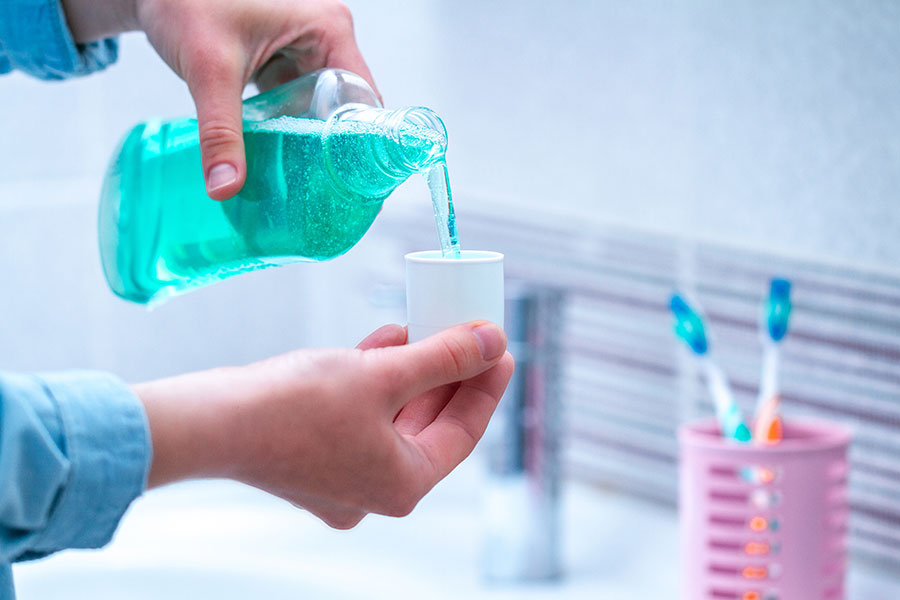
En conclusion, bien que les rafraîchisseurs d'haleine constituent un moyen pratique de rafraîchir l'haleine et de lutter contre les mauvaises odeurs, ils doivent être considérés comme un outil complémentaire Adopter de bonnes pratiques d'hygiène bucco-dentaire plutôt qu'une solution isolée. En intégrant des rafraîchisseurs d'haleine à une routine de soins bucco-dentaires et en adoptant de bonnes pratiques d'hygiène bucco-dentaire, les consommateurs peuvent contribuer à la santé de leurs dents et de leurs gencives, ainsi qu'à la fraîcheur de leur haleine.
